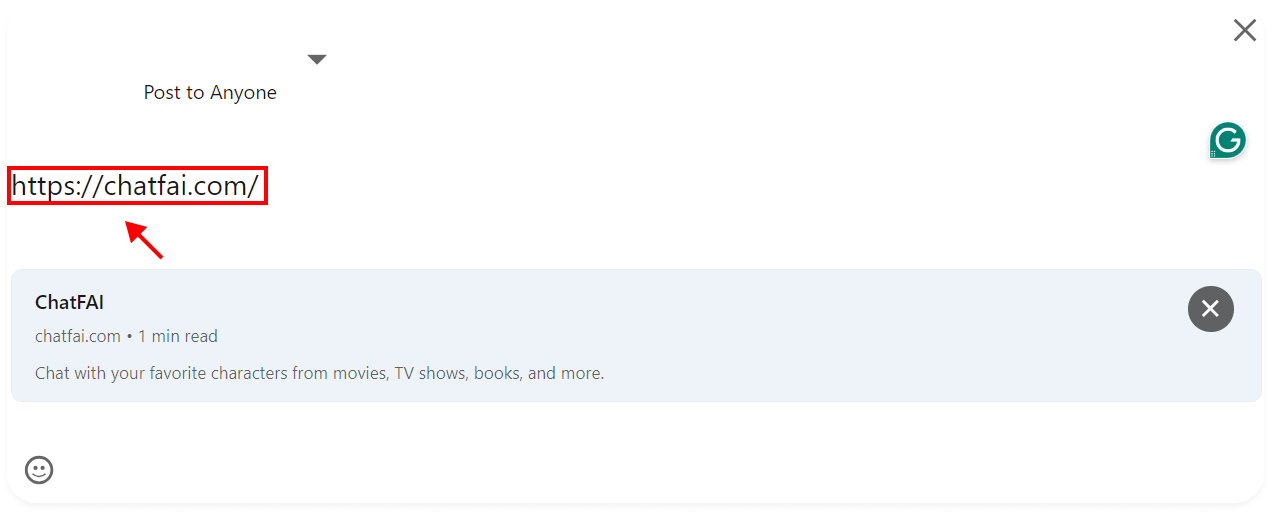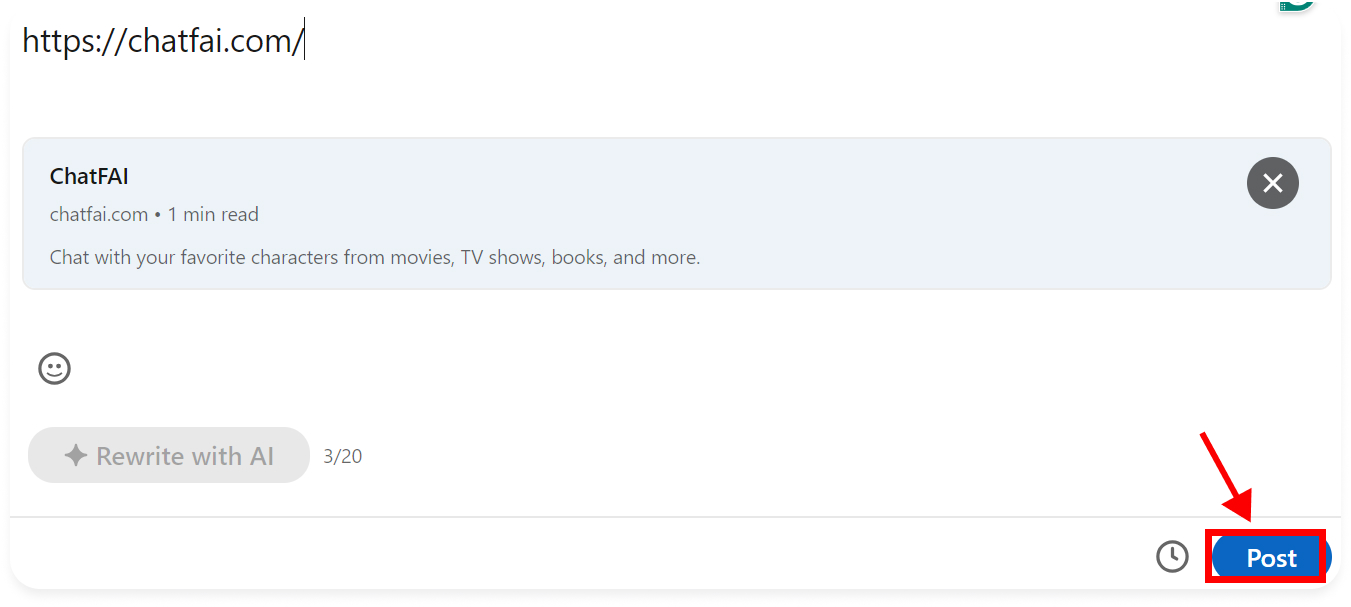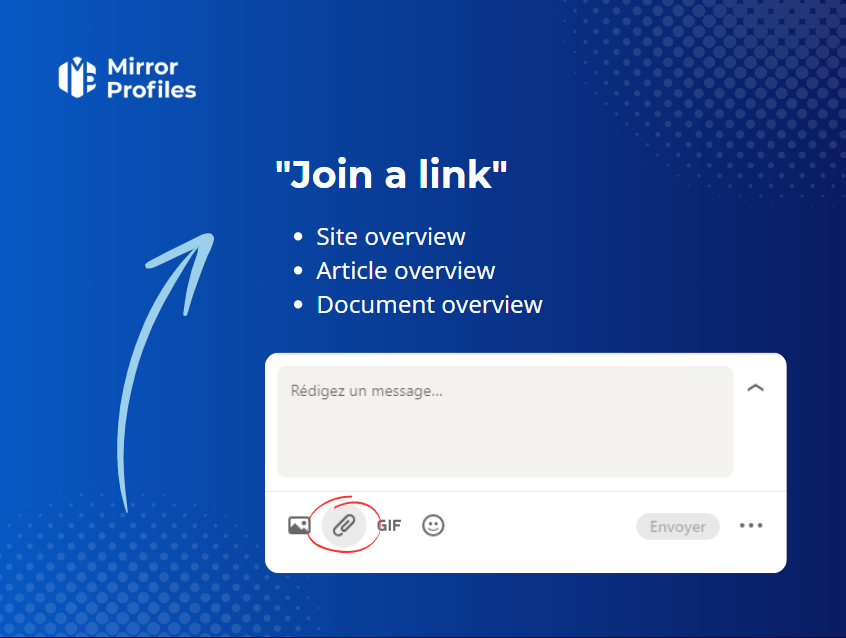Have you ever stumbled upon an engaging LinkedIn post and wished you could easily click through to learn more? Hyperlinks are your answer! They turn a simple text post into a gateway for readers, providing direct access to valuable resources, articles, or your own content. This blog post will guide you through the art of creating hyperlinks on LinkedIn posts, making your content not just informative but also interactive and engaging.
Benefits of Using Hyperlinks in Your LinkedIn Posts

Incorporating hyperlinks into your LinkedIn posts offers a treasure trove of benefits. Here’s why you should start including them:
- Enhanced Engagement: Posts with hyperlinks can draw in more readers. When you provide links to related articles or your projects, you encourage your audience to explore further. For instance, if you’re discussing the importance of digital marketing, linking to a well-researched article can validate your points and keep your audience engaged.
- Increased Visibility: By linking to your own content, you can boost its visibility. If you have a blog or a portfolio, sharing its link in your posts directs your network to your work. This is a fantastic way to showcase your expertise and attract potential clients or employers.
- Building Credibility: Citing sources and linking to reputable articles enhances your credibility. When you reference studies or data, providing a hyperlink allows readers to verify your claims. This builds trust and positions you as a knowledgeable professional in your field.
- Driving Traffic: If your goal is to increase traffic to your website, hyperlinks are essential. A well-placed link in your post can lead readers directly to your site, increasing page views and potentially generating leads.
- Facilitating Networking: Hyperlinks can also promote connections. For example, if you mention a colleague’s work or collaboration, linking to their profile or content can foster goodwill and encourage reciprocal engagement.
In conclusion, utilizing hyperlinks in your LinkedIn posts is more than just a technical skill; it’s a strategy that can elevate your online presence and professional networking. So, next time you craft a post, think about how hyperlinks can enrich your message and connect you with your audience!
Also Read This: How to Share a New Job on LinkedIn: Tips for Effective Job Posting
3. Step-by-Step Guide to Creating a Hyperlink in a LinkedIn Post

Creating a hyperlink in your LinkedIn posts is a straightforward process that can significantly enhance your content's interactivity and engagement. Here’s how to do it, step by step:
- Open LinkedIn: Start by logging into your LinkedIn account. You can do this on both desktop and mobile devices, but the desktop version typically offers a more extensive view.
- Create a New Post: Click on the “Start a post” button at the top of your LinkedIn feed. This opens a new post window where you can begin crafting your content.
- Type Your Message: Write the message or content you want to share. This could be an update, an article, or sharing insights relevant to your industry.
- Add the URL: To include a hyperlink, simply paste the URL directly into the text box. LinkedIn will automatically generate a preview of the link, which can help catch your audience's eye.
- Edit the Display Text (Optional): While LinkedIn doesn’t allow you to change how the URL appears, you can incorporate the link naturally into your text. For example: “Check out my latest blog post on [your topic]: [URL].”
- Post Your Content: Once you’re satisfied with your message and link, click on the “Post” button. Your followers will now see your post with an active hyperlink that they can click on!
And that’s it! With just a few simple steps, you can include hyperlinks in your LinkedIn posts, making it easier for your audience to access additional resources or further information.
Also Read This: How to Add Clickable Links to LinkedIn Posts for Better Engagement
4. Best Practices for Hyperlink Usage on LinkedIn

Using hyperlinks effectively on LinkedIn can help amplify your message and drive engagement, but there are some best practices to keep in mind:
- Be Relevant: Ensure that the links you share are directly related to the content of your post. If you're discussing the latest trends in marketing, link to a credible article or research that supports your points.
- Use Clear Call-to-Actions: Encourage your audience to click your links by using direct calls to action. Phrases like “Learn more here” or “Discover the full article” can entice readers.
- Avoid Overloading with Links: Too many hyperlinks in one post can overwhelm your audience and dilute your message. Stick to one or two high-quality links that add value.
- Check Your Links: Always double-check that your hyperlinks work correctly before posting. A broken link can lead to frustration and can reflect poorly on your professional image.
- Track Engagement: Consider using URL shorteners like Bitly to track clicks on your links. This can provide valuable insights into what content resonates with your audience.
By following these best practices, you can utilize hyperlinks in your LinkedIn posts more effectively, boosting both engagement and the value of your shared content. Happy posting!
Also Read This: How to Add Multiple Positions at the Same Company on LinkedIn
5. Common Mistakes to Avoid When Adding Hyperlinks

Creating hyperlinks in your LinkedIn posts can significantly enhance your content, but there are common pitfalls to be aware of. Here are a few mistakes to avoid to ensure your links work effectively:
- Ignoring Link Shorteners: While it might be tempting to use long URLs, they can look messy and unprofessional. Consider using a link shortener like Bitly or TinyURL. Not only do they tidy up your link, but they also provide tracking capabilities.
- Overloading with Links: Adding too many hyperlinks can overwhelm your readers. Stick to a few well-placed links that add value to your content. Aim for one or two relevant links that directly relate to your post’s topic.
- Forgetting to Test Links: Before posting, always click on your hyperlinks to ensure they direct to the correct destination. There’s nothing more frustrating for your audience than clicking on a broken link!
- Neglecting Context: It’s crucial to provide context for your hyperlinks. Don’t just drop a link without explanation—inform your readers about what they’ll find if they click on it. For example, instead of saying, “Check this out,” consider something like, “For more insights on effective networking strategies, read this article.”
- Using Non-Clickable Text: Ensure that the text you hyperlink clearly indicates what the link is about. Avoid vague phrases like “click here.” Instead, use descriptive text that tells your audience exactly what to expect, such as “Download our free eBook on LinkedIn strategies.”
By avoiding these common mistakes, you’ll create a more engaging and user-friendly experience for your readers. Remember, a well-placed hyperlink can not only drive traffic but also foster trust and authority in your expertise.
6. Conclusion: Enhance Your LinkedIn Engagement with Hyperlinks
Incorporating hyperlinks into your LinkedIn posts is a powerful way to boost engagement and provide additional value to your audience. By guiding your readers to relevant resources, articles, or your own content, you create a richer experience that keeps them coming back for more.
To recap, here are key takeaways for effectively using hyperlinks:
- Be Relevant: Always choose links that complement your post’s content. This relevance keeps your audience interested and encourages click-throughs.
- Create Clear Calls to Action: Invite your readers to click by using strong, clear calls to action. Phrases like “Learn more about…” or “Explore this topic…” pique curiosity and drive engagement.
- Utilize Analytics: Take advantage of LinkedIn’s analytics tools to track how your posts perform. This data can help you understand what types of links resonate with your audience.
- Stay Professional: Remember that LinkedIn is a professional platform. Ensure that any links and the content they lead to reflect your professionalism and expertise.
As you implement these tips, you’ll likely see an increase in interactions on your posts. Hyperlinks are not just tools; they are gateways to deeper conversations and connections. So go ahead, start linking, and watch your LinkedIn engagement soar!
 admin
admin








